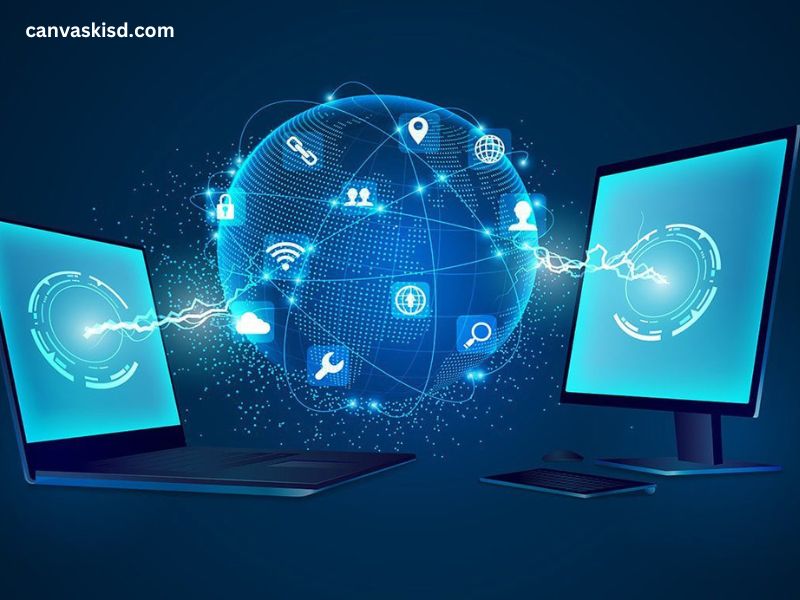Information technology (IT) refers to the use of computers, software, and other digital technologies to create, store, process, and exchange information. It is a vast and rapidly evolving field that has become an integral part of modern life, transforming the way individuals, businesses, and organizations operate and communicate.
Introduction to Information Technology
Information technology encompasses a wide range of tools, systems, and processes that enable the efficient management, storage, and transmission of data. From personal computers and smartphones to complex enterprise software and cloud-based services, IT has revolutionized the way we access, process, and share information.
At its core, information technology involves the application of digital technologies to solve problems, automate tasks, and enhance productivity. It encompasses a diverse range of disciplines, including computer science, software engineering, network administration, data analysis, and cybersecurity, among others.
As the world becomes increasingly digitized, the importance of information technology continues to grow, with IT professionals playing a crucial role in driving innovation, improving efficiency, and enabling organizations to stay competitive in a rapidly changing landscape.
The Role of Information Technology in Businesses
Information technology has become a fundamental component of modern business operations. Across industries, companies rely on IT systems and solutions to streamline their processes, improve decision-making, and enhance customer experiences.
Some of the key ways in which IT supports business success include:
- Automation and Efficiency: IT tools and software can automate repetitive tasks, reducing manual labor and improving overall efficiency.
- Data Management and Analysis: IT systems enable businesses to collect, store, and analyze vast amounts of data, providing valuable insights that inform strategic decision-making.
- Communication and Collaboration: IT solutions, such as video conferencing, cloud-based file sharing, and project management tools, facilitate seamless communication and collaboration among team members, regardless of their physical location.
- Customer Engagement: IT-driven technologies, such as e-commerce platforms, customer relationship management (CRM) systems, and social media, enable businesses to better understand and engage with their customers.
- Competitive Advantage: Leveraging cutting-edge IT solutions can help organizations stay ahead of the competition, driving innovation and improving their overall market position.
As businesses continue to navigate an increasingly digital landscape, the role of information technology will only become more critical in maintaining a competitive edge and driving long-term success.
Key Components of Information Technology
Information technology encompasses a wide range of components that work together to support the management, processing, and exchange of information. Some of the key components of IT include:
- Hardware: This refers to the physical devices and equipment used in IT systems, such as computers, servers, networking equipment, and storage devices.
- Software: Software includes the programs, applications, and operating systems that run on IT hardware, enabling various functionalities and capabilities.
- Networking: Networking technologies, such as local area networks (LANs), wide area networks (WANs), and the internet, facilitate the transmission of data and communication between devices and systems.
- Databases: Databases are used to store, organize, and manage large amounts of data, ensuring its integrity, security, and accessibility.
- Cybersecurity: Cybersecurity measures, including firewalls, encryption, and access controls, protect IT systems and data from unauthorized access, theft, or disruption.
- Data Management: Data management encompasses the processes and technologies involved in collecting, storing, processing, and analyzing data to derive meaningful insights.
- Cloud Computing: Cloud computing refers to the delivery of computing services, such as storage, processing power, and software applications, over the internet, rather than on local servers or devices.
These components work together to create the comprehensive IT infrastructure that supports the information needs of individuals, businesses, and organizations.
Technology Careers and Job Opportunities
The field of information technology offers a diverse range of career paths and job opportunities, catering to a wide variety of skills and interests. Some of the most common IT careers include:
- Software Developer: Responsible for designing, developing, and maintaining software applications.
- Computer Systems Analyst: Analyzes an organization’s computer systems and procedures and makes recommendations to improve efficiency.
- Computer Systems Administrator: Responsible for the daily operation and maintenance of computer systems and networks.
- Computer Network Architect: Designs and builds data communication networks, such as LANs, WANs, and intranets.
- Computer Systems Administrator: Responsible for the daily operation and maintenance of computer systems and networks.
- Computer Systems Analyst: Analyzes an organization’s computer systems and procedures and makes recommendations to improve efficiency.
- Cybersecurity Specialist: Responsible for protecting an organization’s computer systems and networks from cyber threats.
- Data Analyst: Collects, analyzes, and interprets data to help organizations make informed decisions.
- IT Project Manager: Oversees the planning, execution, and delivery of IT projects within an organization.
- IT Support Specialist: Provides technical support and troubleshooting for users of computer systems and software.
As technology continues to evolve, the demand for skilled IT professionals is expected to grow, offering numerous opportunities for career advancement and specialization.
Benefits of Information Technology
Information technology has brought about numerous benefits, both for individuals and organizations. Some of the key advantages of IT include:
- Improved Efficiency: IT solutions can automate routine tasks, streamline workflows, and enhance productivity, allowing individuals and organizations to work more efficiently.
- Enhanced Communication and Collaboration: IT tools, such as video conferencing, instant messaging, and cloud-based file sharing, facilitate seamless communication and collaboration, regardless of geographic location.
- Increased Access to Information: The internet and digital technologies have revolutionized the way we access and share information, making it easier to stay informed and connected.
- Data-Driven Decision-Making: IT systems enable the collection, storage, and analysis of large amounts of data, providing valuable insights that can inform strategic decision-making.
- Improved Customer Experience: IT-driven technologies, such as e-commerce platforms and customer relationship management (CRM) systems, can enhance the overall customer experience, leading to increased satisfaction and loyalty.
- Cost Savings: Automation, streamlined processes, and remote work capabilities enabled by IT can lead to significant cost savings for organizations.
- Competitive Advantage: Leveraging cutting-edge IT solutions can help organizations stay ahead of the competition, driving innovation and improving their overall market position.
As the world becomes increasingly digital, the benefits of information technology will continue to expand, transforming the way we live, work, and interact.
Challenges in Information Technology
While information technology offers numerous benefits, it also presents several challenges that organizations and individuals must navigate. Some of the key challenges in IT include:
- Cybersecurity Threats: The rise of cyber attacks, such as data breaches, ransomware, and phishing scams, poses a significant threat to the security and integrity of IT systems and data.
- Rapid Technological Change: The IT landscape is constantly evolving, with new technologies, platforms, and tools emerging at a rapid pace. Keeping up with these changes can be challenging for both individuals and organizations.
- Data Management and Privacy: As the volume of data being collected and stored continues to grow, organizations must grapple with the challenges of data management, including ensuring data integrity, security, and compliance with privacy regulations.
- Talent Shortage: The demand for skilled IT professionals often outpaces the supply, leading to a shortage of qualified talent in the industry.
- Integration and Compatibility: Integrating various IT systems and ensuring compatibility between different technologies can be a complex and time-consuming process.
- Cost and Budget Constraints: Implementing and maintaining IT infrastructure can be costly, and organizations must carefully manage their IT budgets to ensure they are getting the most value from their investments.
- User Adoption and Training: Successful implementation of IT solutions often requires effective user adoption and training, which can be a significant challenge, especially in organizations with diverse and geographically dispersed teams.
Addressing these challenges requires a multifaceted approach, involving strategic planning, ongoing training and development, and a commitment to staying ahead of the technological curve.
Emerging Trends in Information Technology
The field of information technology is constantly evolving, with new technologies and innovations emerging at a rapid pace. Some of the key emerging trends in IT include:
- Artificial Intelligence (AI) and Machine Learning (ML): AI and ML are transforming various industries, enabling intelligent automation, predictive analytics, and personalized experiences.
- Cloud Computing and Edge Computing: The continued growth of cloud-based services and the emergence of edge computing are changing the way organizations store, process, and access data.
- Internet of Things (IoT): The proliferation of connected devices, from smart home appliances to industrial equipment, is creating new opportunities for data collection, analysis, and automation.
- Cybersecurity and Data Privacy: As cyber threats continue to evolve, organizations are placing a greater emphasis on robust cybersecurity measures and data privacy protocols.
- Blockchain Technology: Blockchain, the distributed ledger technology, is being explored for a wide range of applications, including secure financial transactions, supply chain management, and digital identity management.
- Augmented Reality (AR) and Virtual Reality (VR): AR and VR technologies are finding applications in various industries, from gaming and entertainment to training and remote collaboration.
- Quantum Computing: The development of quantum computing has the potential to revolutionize fields such as cryptography, materials science, and drug discovery.
- DevOps and Agile Methodologies: The adoption of DevOps and agile approaches to software development and IT operations is driving faster innovation and improved collaboration.
As these and other emerging technologies continue to evolve, IT professionals will play a crucial role in helping organizations navigate the changing landscape and leverage new opportunities for growth and innovation.
Importance of Information Technology in Education
Information technology has become an integral part of the modern education system, transforming the way students learn, teachers teach, and educational institutions operate. Some of the key ways in which IT is transforming education include:
- Enhanced Learning Experiences: IT-driven tools, such as interactive whiteboards, educational software, and online learning platforms, can make learning more engaging, interactive, and personalized.
- Improved Access to Information: The internet and digital resources have dramatically increased the availability and accessibility of information, enabling students to explore a wide range of topics and conduct research more efficiently.
- Collaborative Learning: IT solutions, such as video conferencing and cloud-based collaboration tools, facilitate virtual classrooms and enable students to work together on projects, regardless of their physical location.
- Data-Driven Decision-Making: IT systems enable educational institutions to collect and analyze data on student performance, attendance, and engagement, allowing them to make more informed decisions and tailor their curricula and teaching methods accordingly.
- Administrative Efficiency: IT solutions, such as student information systems and learning management systems, can streamline administrative tasks, improve record-keeping, and enhance overall operational efficiency in educational institutions.
- Professional Development for Educators: IT-enabled training and development programs can help educators stay up-to-date with the latest teaching methodologies and technological advancements, enhancing their skills and effectiveness in the classroom.
As the education sector continues to evolve, the role of information technology will only become more critical in shaping the future of learning and equipping students with the skills and knowledge needed to thrive in the digital age.
Information Technology in Healthcare
Information technology has become a crucial component of the healthcare industry, transforming the way medical professionals deliver care, manage patient information, and improve overall outcomes. Some of the key ways in which IT is impacting healthcare include:
- Electronic Health Records (EHRs): EHRs enable the digital storage and management of patient medical records, improving data accessibility, collaboration, and decision-making among healthcare providers.
- Telemedicine and Remote Healthcare: IT-enabled telemedicine solutions, such as video consultations and remote patient monitoring, have expanded access to healthcare services, especially in underserved or remote areas.
- Medical Imaging and Diagnostics: Advanced imaging technologies, such as digital x-rays, MRI, and CT scans, combined with powerful data analysis tools, have enhanced the accuracy and efficiency of medical diagnoses.
- Robotics and Automation: Robotic and automated systems are being used in various healthcare applications, from surgical procedures to medication management, improving precision, reducing errors, and enhancing patient outcomes.
- Predictive Analytics and Population Health: IT-driven data analytics and predictive modeling are enabling healthcare providers to identify and address population health trends, as well as personalize treatment plans for individual patients.
- Cybersecurity and Data Privacy: As healthcare organizations handle sensitive patient information, IT professionals play a crucial role in ensuring the security and privacy of electronic health data, in compliance with relevant regulations.
The integration of information technology in healthcare has the potential to improve patient outcomes, increase the efficiency of medical services, and transform the overall healthcare landscape.
Conclusion
Information technology is a rapidly evolving field that has become integral to the way we live, work, and interact. From enhancing business operations to transforming the education and healthcare sectors, IT has brought about numerous benefits, including improved efficiency, enhanced communication and collaboration, and data-driven decision-making.
As the world becomes increasingly digitized, the importance of information technology will only continue to grow, presenting both opportunities and challenges for individuals and organizations. By embracing emerging technologies, developing skilled IT talent, and addressing cybersecurity and data management concerns, we can unlock the full potential of information technology and drive innovation across various industries.
To learn more about the latest trends and advancements in information technology, subscribe to our newsletter and stay up-to-date with the latest insights and industry developments. Sign up now to receive exclusive content and expert analysis delivered straight to your inbox.



